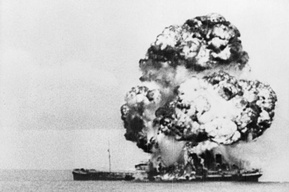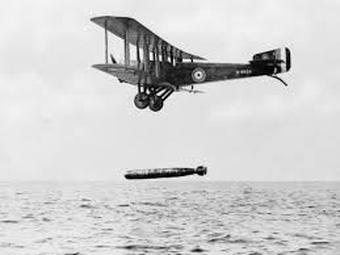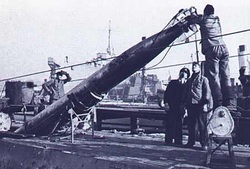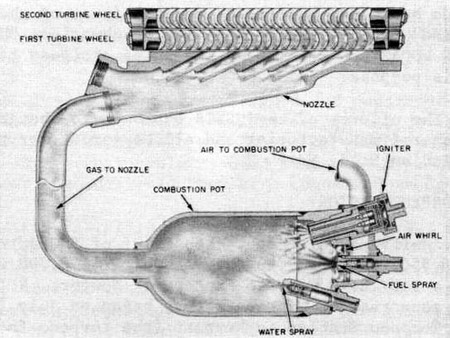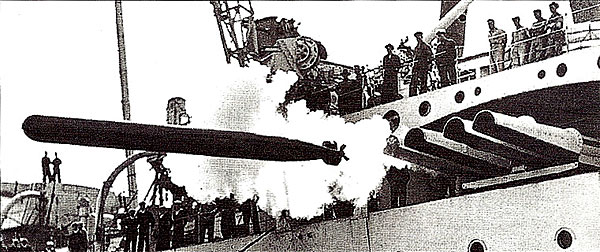Torpedo Improvements
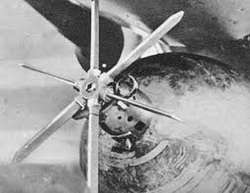
There was very little development to the torpedo during World War I. Most development happened either before World War I or after World War I and before World War II as a means of preparing for war. One major improvement however was the Mk 7 torpedo. It was the first steam-driven torpedo. The Mk 7 had a range of 18,000 feet and a speed upward of 40 miles per hour. It could also be adapted to fire from a submarine or a destroyer vessel.
The improvements on the torpedo made just before World War I and during World War I were mostly to the war noses. Today we call the war noses, detonators. Before World War I, torpedoes would only detonate by directly hitting its target. Researchers developed a way to detonate the torpedo from any direction or even a glancing blow by the use of whiskers; four levers which actually extended from the torpedo. These whiskers would release a pin that triggered the torpedo to detonate.
Another major improvement was the Mk 7 torpedo. It was the first steam-driven torpedo. The Mk 7 had a range of 18,000 feet and a speed upward of 40 miles per hour. It could also be adapted to fire from a submarine or a destroyer vessel.
Most torpedoes were launched from submarines or destroyer vessels; however, airplanes had just started to be used as a means to drop torpedoes on targets from the air. The reason they were not used more was mainly because planes could carry no more than 600 pounds. So they were not capable of delivering a torpedo powerful enough to seriously damage a warship.
The improvements on the torpedo made just before World War I and during World War I were mostly to the war noses. Today we call the war noses, detonators. Before World War I, torpedoes would only detonate by directly hitting its target. Researchers developed a way to detonate the torpedo from any direction or even a glancing blow by the use of whiskers; four levers which actually extended from the torpedo. These whiskers would release a pin that triggered the torpedo to detonate.
Another major improvement was the Mk 7 torpedo. It was the first steam-driven torpedo. The Mk 7 had a range of 18,000 feet and a speed upward of 40 miles per hour. It could also be adapted to fire from a submarine or a destroyer vessel.
Most torpedoes were launched from submarines or destroyer vessels; however, airplanes had just started to be used as a means to drop torpedoes on targets from the air. The reason they were not used more was mainly because planes could carry no more than 600 pounds. So they were not capable of delivering a torpedo powerful enough to seriously damage a warship.
